Lenovo ThinkStation P620 Performance
This is perhaps where we had the most insights. We used the system for our AMD Ryzen Threadripper Pro 5995WX WEPYC Review since we had both the 3000WX and 5000WX series parts in the same chassis.
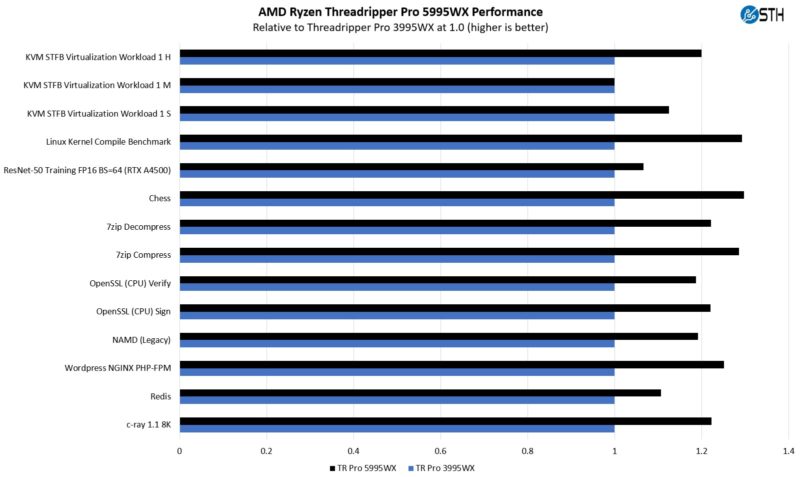
What we found, back-to-back in the Lenovo systems was that the new Ryzen Threadripper Pro 5995WX was around 20-30% faster than the 3995WX. The question was still, “how does the new part perform in the P620 versus the Supermicro system?” That was more interesting than one would believe.
First, we tried the system with both the NVIDIA RTX A6000 as well as the NVIDIA RTX A4500 that PNY supplied. On the RTX A6000, we found solid performance on both of the systems:
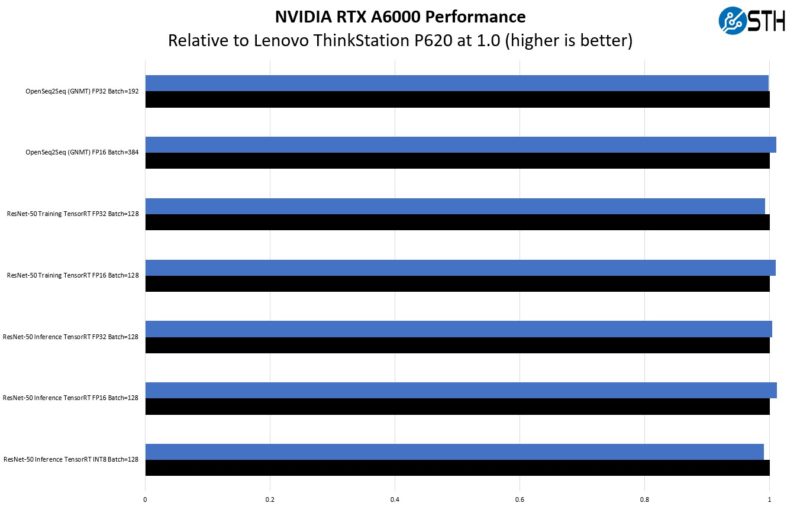
We saw something similar on the lower-end A4500.
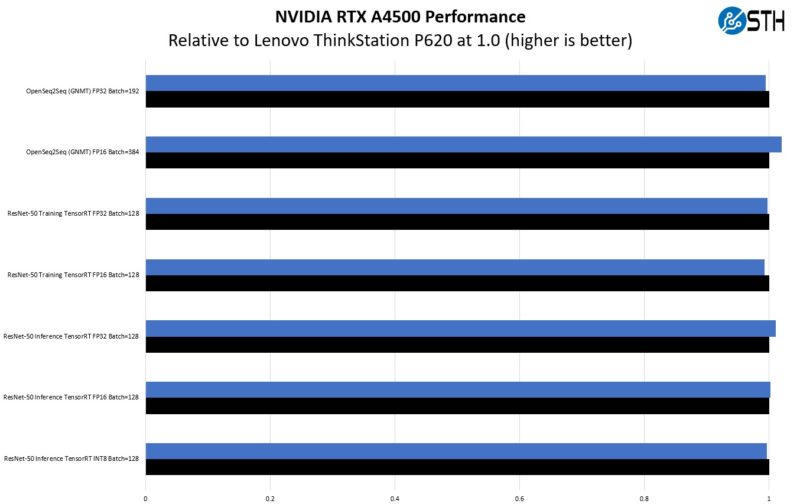
None of this was conclusive.
Next, we turned to the CPU performance. We ran our normal benchmark suite multiple times to see where the results were for both systems, and we saw very similar results.
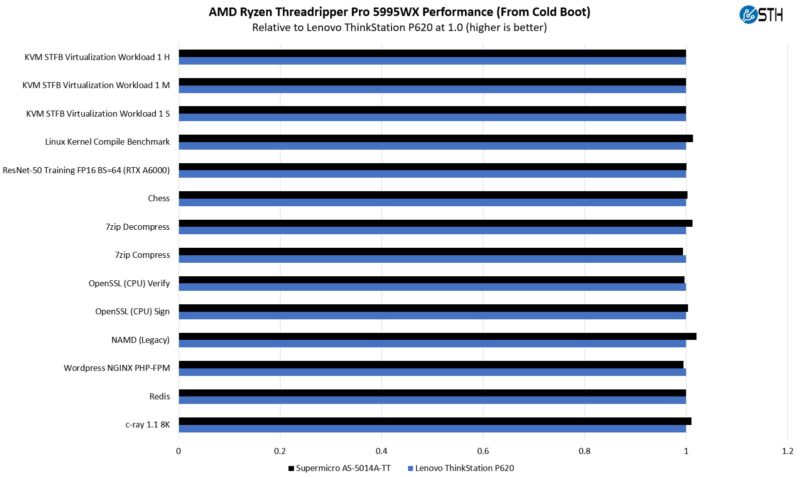
Overall, we would consider this within a margin of error between the two systems.
Still, with the Supermicro having a large liquid cooling setup and the Lenovo having a unique air cooling setup, it felt like there should be a difference. These machines are often used for long tasks like overnight rendering. These days a STH video takes ~40 minutes to render, but those doing 3D animation will wait longer. So instead, we tried a simple test, we looped benchmarks for 24 hours, then went into our normal test runs on both systems. With that, we had a result:
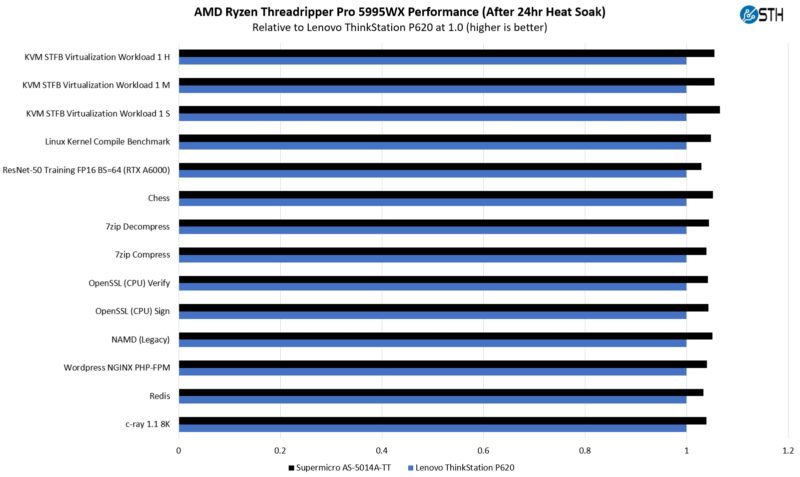
It seems like the difference in liquid cooling here becomes apparent as the system gets heat soaked.
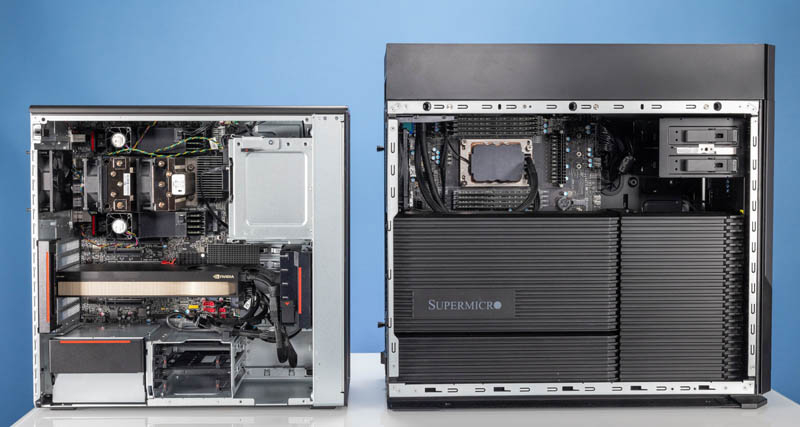
If you turn on and off your system in the morning, at lunch, and in the evening, then perhaps this is not an issue, or if the system is at low load. Still, the Lenovo system, while smaller, seems to sacrifice thermal performance over the longer term.
Next, we will discuss AMD PSB, our key lessons learned, and give our final thoughts.




the supermicro looks nice
thanks STH for mentioning that lenovo locks its CPUs to their motherboards, shame on this practice.
re P620, i cannot fathom paying premium for Threadripper CPU and not getting full access to all available PCI lanes, and this poor selection of USB ports and even no front-panel available 2.5″ slots, not to mention no hot-swappable nvme.
What about Noise, DPC latencies?
can’t turn off PSB in Lenovo-bios?
@altmind. Wasn’t there something about deciding whether to vendor lock the CPU at first boot? Of course, I do not condone this practice, but maybe it’s not as bad as it is portrayed to be, since it would rather depend on the customers’ IT departments. (insert potential jokes here)
You had till you said vendor locked CPUs. Now I want nothing to do with any Lenovo.
Thanks Patrick. TR is a nifty CPU, lots of PCIe. But AMD has made it so expensive and so hard to find, it is in it’s way more esoteric than much of the other stuff you cover here.
Actually the CPU vendor lock was an AMD idea. People were arbitraging Threadrippers off Lenovo workstations in the used market and putting bottom of the barrel TR’s in the Lenovo chassis and then dumping them. Lenovo, to no blame of themselves, didn’t want to be in the Threadripper CPU supply business.
Please see the recent thread in Lenovo’s general discussion forum about the engineering failures of the second gen P620. Your conclusions will be dramatically altered in favor of the supermicro system once you learn about the RAM limitations, frequent QC lapses like deafening coil whine in many units with the 5XXX processor, the poor consumer grade customer service, and many other problems. It’s valuable perspective that highlights just how fragile the second-gen P620 really is for upgradability (more RAM, Linux systems, etc) and professional work. I don’t think it’s fair to say anyone would be happy with such a shoddy piece of untested engineering (virtually untested for the 5xxx) restricted to only the tiny drives, ram, and windows OS (Linux systems suffer from the C6 sleep bug after highly threaded loads terminate and the system returns to idle).
Please consider revising this review in light of the struggles and admissions by Lenovo employees (confirming lack of support for over 512gb ram on the 5XXX series, lack of support for full size hard drives due to airflow constraints, etc).
P620 is a total trainwreck off a system, keeps rebooting randomly, gives a s202 error, sometimes 2 times a day, apperently nobody knows how to fix it.
Do not buy it, go for a Dell system.
Specs might be good, put if the sytem keeps crashing then what is the use of those specifications.